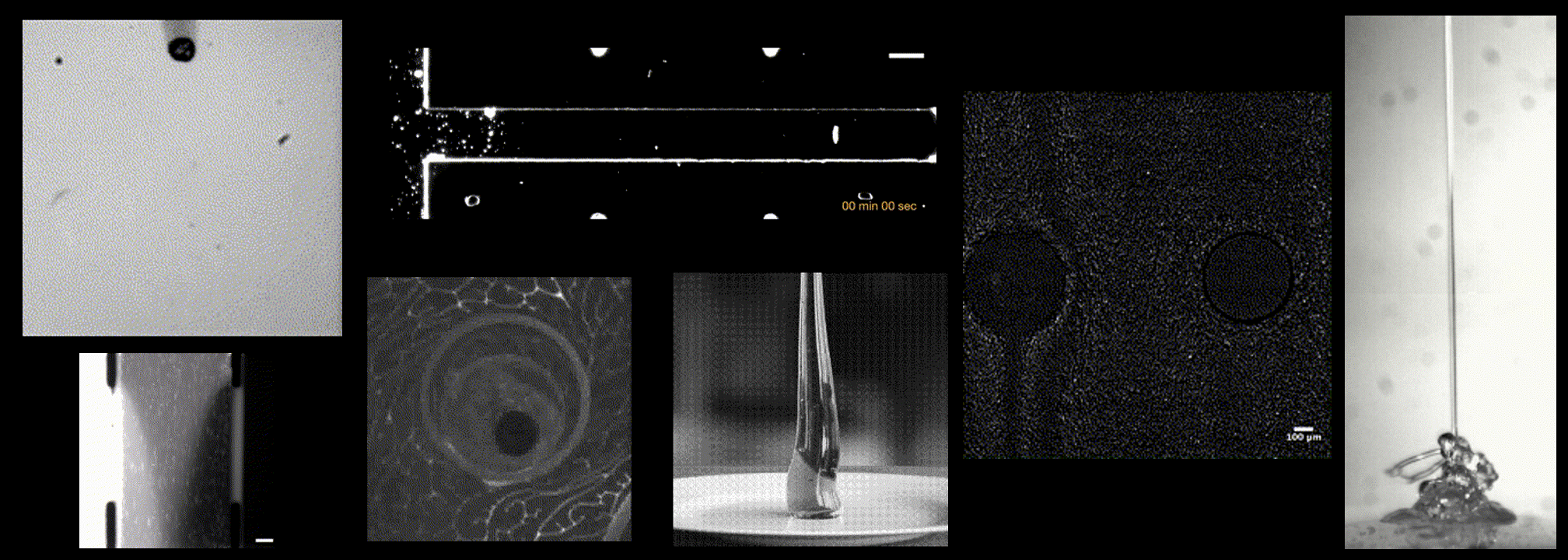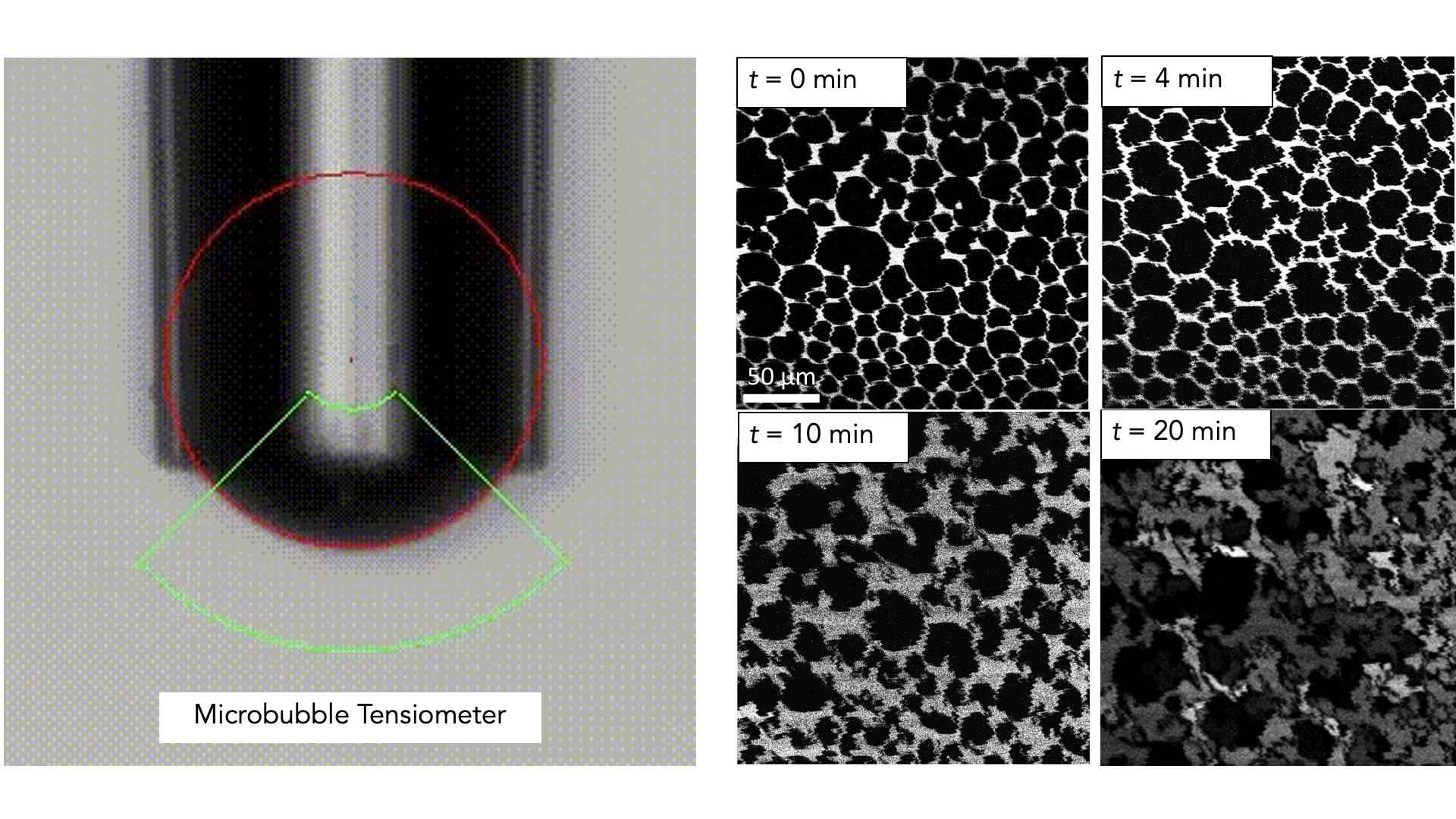Solvent transport and mechanics of polymer gel membranes
This ongoing project is a continuation of applying the fluid–solid (FS) model of polymer gels to membrane separations, which we previously showed unifies classical theories for solvent transport through swollen gels. Using theory and experiment, we seek to clarify how solvent transport and mechanics are inextricably related, and are moreover interested in extending the FS model to novel membrane systems for both hydraulic permeation and pervaporative transport.
Applications: water purification/desalination, organic solvent nanofiltration, lithium extraction
Mixed monolayers at the air–water interface
This ongoing project builds on our previous work with lipid-based surfactants, where we observed distinct morphological and rheological transitions, such as domain solidification and network formation. We are now investigating the interfacial adsorption of mixed surfactants and proteins to identify the key rate-controlling mass transport mechanisms. Additionally, we aim to establish the structure–property relationships of such mixed, evolving adsorption layers.
Applications: Lung therapeutics, pharmaceuticals, cosmetics, food products
Curvature and heterogeneity in complex biological interfaces
This project was the union of two research areas: colloidal capillary interactions and phase separation in monolayer films. We found that morphological changes due to chemical composition are well explained by phase energetics and that self-organization of domains is driven by coupling between curvature and elasticity.
Applications: lung/eye disease, cosmetics/foodstuffs, cell biophysics
Microscale control of colloidal migration via solute gradients
This project introduced a novel microfluidic technique for precise measurement of colloidal migration under solute gradients with diffusiophoresis. We explored the behavior of Janus particles, demonstrating how their migration can be controlled by adjusting surface properties and solute conditions. Overall, the study offered new tools and insights for manipulating colloidal systems and particle delivery.
Applications: consumer products, drug delivery, and enhanced oil recovery




